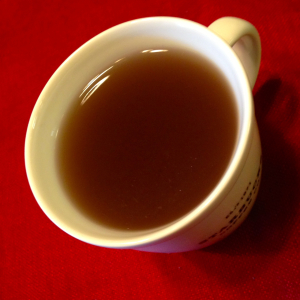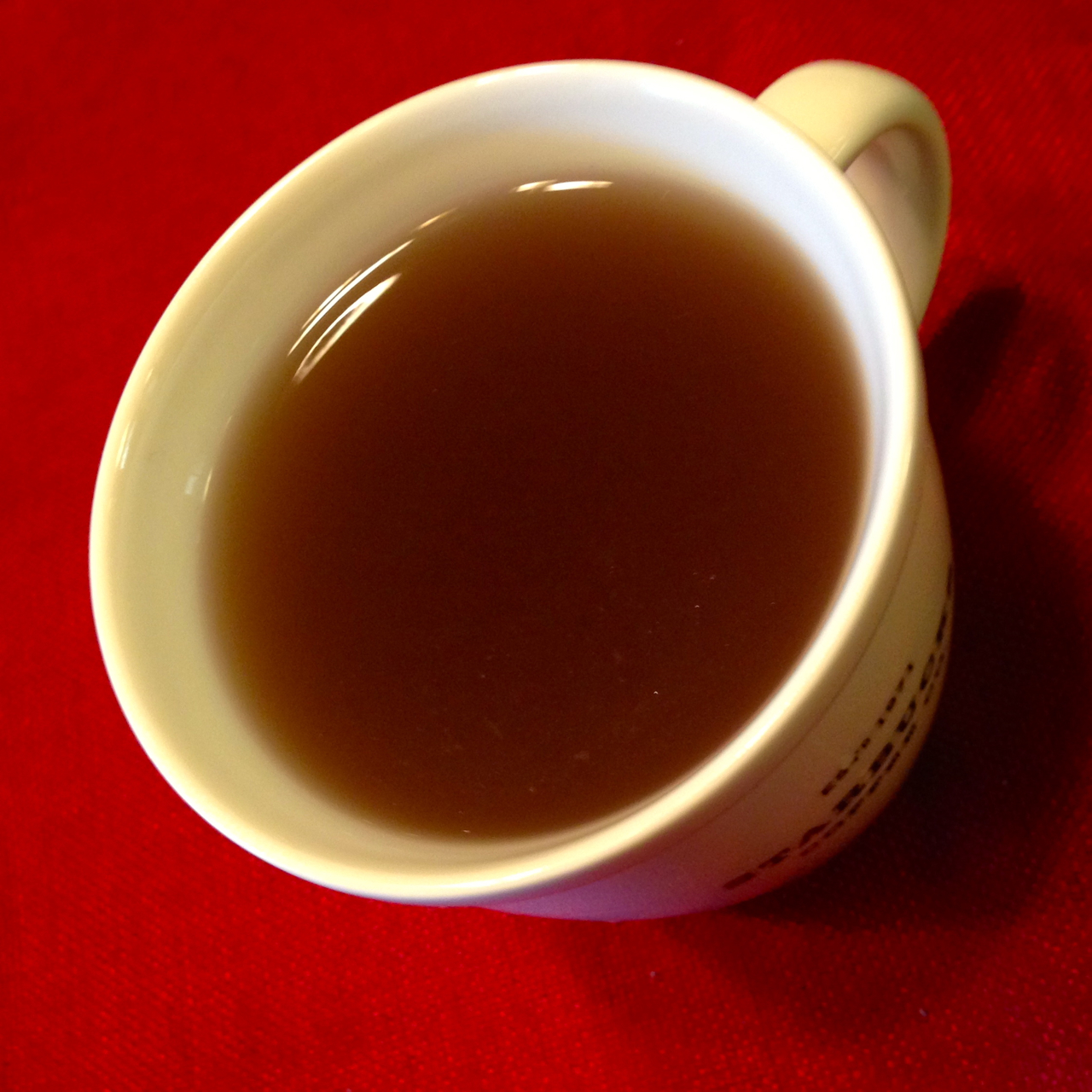I don’t know about you, but I love a warm cup of vegetable broth. Right now I’m sipping a large mugful as I recover from a bit of over-indulgence over the holidays. I’m also hoping to keep a cold at bay by drinking as much broth as possible. A cup of delicious broth can also make for a satisfying small meal or help keep you warm on a cold day. This broth also makes a great base for any number of soups. There are a lot of great broth recipes out there, but the one I’m going to share with you is based on the Magic Mineral Broth recipe made famous by Rebecca Katz in One Bite at a Time.
Vegetable Broth
Ingredients:
- 2 unpeeled carrots, cut into thirds
- 1-2 unpeeled medium onions, including peels/skin, cut into chunks
- 3-4 stalks celery, including the heart, cut into thirds
- 1 head of garlic, including peels/skin, roughly chopped
- few inches of fresh ginger root, roughly sliced
- 1/2 bunch fresh flat‐leaf parsley
- 1 sweet potato or yam with skins on, quartered
- 1 8‐inch strip of kombu seaweed (available at Whole Foods, online or if you live in Oakland, HERE)
- 2 bay leaves
- 12 black peppercorns
- 4 whole allspice or juniper berries (optional)
- 1 tablespoon quality sea salt (note: if I’m going to cook beans with the broth, I leave the salt out)
Note: Adjust the amount of ingredients to the size of your stock pot. Also, I often use vegetable scraps to make my broths (see below for more info on using scraps). Other vegetable choices (depending on the flavor profile you want and what you have on hand) can include mushrooms, leeks, fennel, greens, fresh herbs, parsnips, and potatoes.
Directions:
- Rinse all the vegetables well to remove any dirt.
- In a large stockpot, combine all the ingredients except the salt. Fill the pot to 2 inches below the rim with water, cover, and bring to a boil.
- Remove the lid, decrease the heat to low, and simmer a minimum of 2 hours. As the stock simmers some of the water will evaporate. Simmer until the full richness of the vegetables can be tasted. I like to try and simmer mine for as much as 4 hours or more.
- Add the salt and stir (unless you plan to use the broth to cook dried beans).
- Let stock cool in pot until room temperature.
- Strain the stock using a large coarse‐mesh strainer (remember to use a heat‐resistant container underneath) and/or cheese-cloth or clean linen towel. Compost the cooked vegetables.
Makes 6 to 7 quarts, depending on stockpot size.
Broth can be frozen up to 6 months in a variety of airtight container sizes for every use.
 Tips for what to do with your broth:
Tips for what to do with your broth:
- You can add a little tamari, Bragg’s amino acids, coconut amino acids, or miso to your broth for a little added flavor.
- I also often add some coconut oil for a bit more substance.
- If you are not vegetarian/vegan, you can also add some gelatin for added protein.
- When I’m making broth to really support my immune system, I will add A LOT more ginger and garlic to the initial broth ingredients. You can also add dried or fresh shiitake mushrooms, oregano, reishi mushrooms, and/or astragalus root.
- Again, broth can be sipped alone or used as a base for any soup.
- Broth is really great to drink when recovering from surgery, illness or chemotherapy. It is a great way to get nourishment for your body without putting too much stress on your digestive system.
- To store leftover broth, I put them in mason jars to drink over the week and then freeze the rest.
Using vegetable scraps:
One of my favorite ways to make vegetable broth is to use leftover vegetable scraps. Not only does this reduce waste and save money, but often the foods we consider “scraps” contain great nutritional benefits!
- When cooking any meal, save your cleaned vegetable scraps in a plastic freezer bag and store in freezer until ready to make into broth. I just keep adding ingredients to bags until I’m ready to make broth (or the freezer gets full!).
- Good “scraps” to include are carrot peels, carrot tops, celery tops and bottoms, fennel tops, leek green tops, onion and garlic skins, broccoli and cauliflower stalks, stems from herbs like parsley, green tops of radishes, turnips or beets (just note that if you use beet greens, your broth will turn red!). I also added any vegetables that we didn’t get a chance to eat in the week that may be going a little limp.
- Just dump the frozen vegetable scraps into your pot, add in some fresh vegetables that may not be included in your frozen bag, and then follow the directions from above!


As a health enthusiasts this is really an excellent tips for us. I am surprise that we can do anything with our vegetable broth. Thanks for sharing this tip. I will definitely try this one.